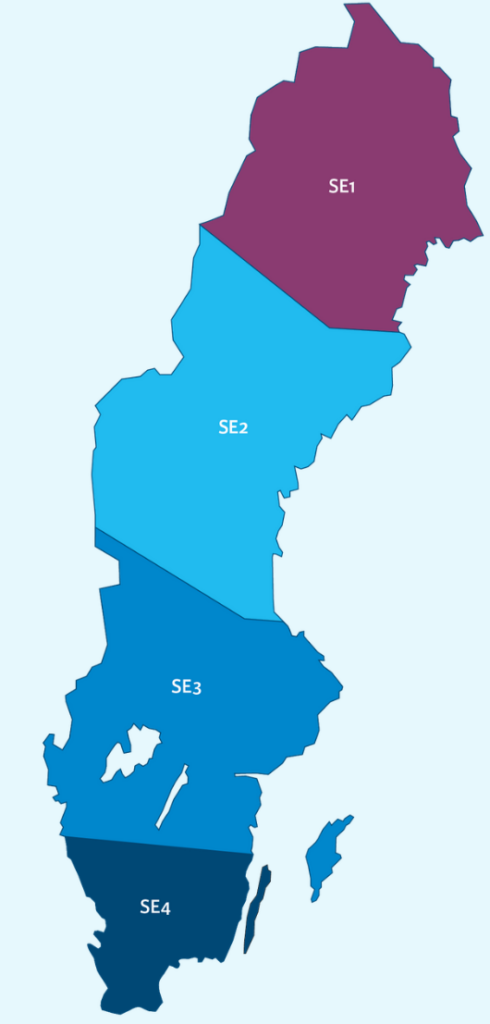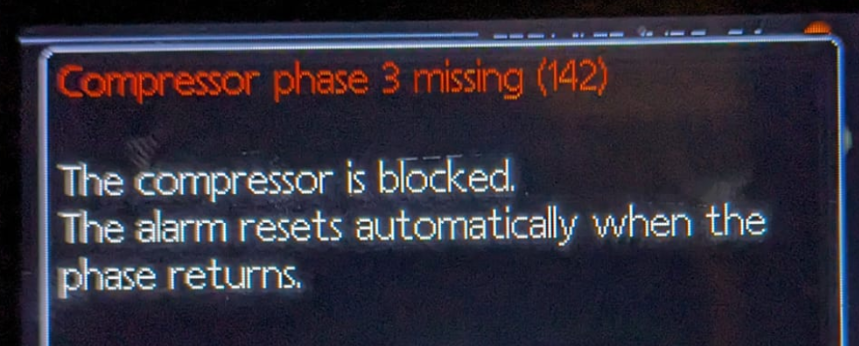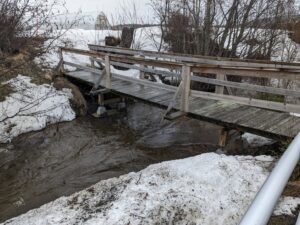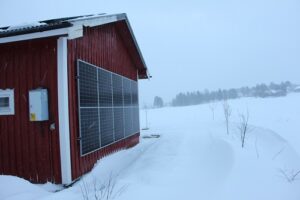Swedish Domestic Electric
Here’s everything you might have wondered about the domestic electric supply in Sweden. This is mainly aimed at people that have never been to Sweden.
How is electric provided?
As a domestic home owner, you will have an electric supplier, and a electric network operator. They might be the same company, but you would otherwise get a bill from each.
The electric network operator provides the physical connection and is usually fixed. It will likely be E.ON or Vattenfall. Oddly, my area is E.ON but the vans that arrive are always branded as Vattenfall, which I guess is the result of some kind of subcontracting going on. Electricity pricing is divided into specific regions and there is a good description of the history behind this at the following page:
https://www.tekniskaverken.se/privat/other-languages/save-electricity/electricity-market

The electric supplier you can switch between as you choose. You can use the same company as your network operator or one of many others. There are comparison sites like https://elpriskollen.se that help compare to find the best fit for your consumption level and other requirements.
There is also a choice of billing options. The usual option is to choose a fixed rate per kWh or variable hourly rate but there are further options.
The final cost per kWh will be the network operators cost (hourly rate or flat rate depending on tariff chosen), plus the electrical suppliers cost per delivered kWh (flat rate, affected by the threshold charging type chosen – see below).
When does a fixed-rate contract make sense?
If you start a fixed rate contract, the best time is when electricity prices are low such as in the middle of summer, and you can lock in the price for the next 12 months.
The worst time to renew is during the winter, and during some kind of instability or crisis that drives the price up
When does variable-rate make sense?
If you can set appliances and heating to run when the hourly rate is low, then you can make cost savings. It becomes a nightmare if the price goes high however.
And someone mentioned a 8000kWh threshold?
On the “default” 16am domestic feed, E.ON have a pricing option as the network operator (unrelated to the supplier role pricing discussed above).
- homes can use a pricing model recommended for annual use of 8000kWh or more, where the per-unit kWh used cost is low but the monthly flat-cost for being connected is high.
- Alternately, for homes below this amount there is another option, where the monthly cost is much lower, but the per-kWh rate is much higher.
Ok, what is the typical cost for an average rural house?
We live in a detached 1940s two story house towards the north of the country with a detached garage and the lowest 3 phase 16amp feed and electric heating. We currently use about 9000kWh a year to heat the house to 20.5C via a groundsource heat pump and to keep the garage above 4C via an air source heat pump.
Our worst consumption when we first moved in was about 14000kWh (if it had been a full year, unchanged) would have cost about 30000 SEK (approx €2500, £2200, $2800).
Our best year so far after various improvements is below 9000kWh and would cost half that about 15000 Swedish Kronor (approx €1250, £1100, $1400), plus a tax reduction for produced electric. We could reduce it to about 5000kWh with batteries and further with more solar, but that will take time to save up for.
The electrical spot price is provided by lots of different websites, for the 4 Swedish zones. One such site is www.elen.nu
Tax Reduction? What bonuses are there?
Yeah, the electric network provider reports your kWh produced automatically to the tax authority. Each year when you get your tax return there’s a line for produced electric and a reduction in your tax. There’s a threshold to prevent abuse.
If two of you live at a property but the electric bill is in your name it might be only one of you gets the reduction by default. It’s easy to fix, by asking the electric network provider that you want to register your partner for the tax reduction and split it between you.
Sometimes if a winter is determined to have been especially cold, the government provide a small refund on the winter electricity usage which is fairly automatic and you get a notification about in the post.
Current other tax reductions are 20% tax break on solar panel installation costs, and 50% tax break on domestic battery installation costs and car charging points, which is likely to help bootstrap the solar installation and maintenance industry, encourage renewable production, and to encourage domestic production resilience. It is described more on the skatteverket site but the installer will do the application and it automatically appears on your annual tax return.
Did you say a 3 phase feed?
Yes. So in the UK for example you have a 1phase, roughly 240v and 100 amp fused feed to the property, directly into a domestic consumer unit. The 100 amp fuse isn’t changeable by the house owner, they just operate the DCU (miniature circuit breakers or RCBOs) and until recently even electricians weren’t supposed to touch it.
In Sweden we have a 3 phase roughly 240V feed, with a 16 amp fuse for each feed. You agree with the network provider what amp feed to have. Each higher feed costs more but you can power more things or sell back more power at once. The maximum is 63 amp 3 phase for a domestic property. The home owner can change the fuses if they blow, they sell them in petrol stations and hardware stores and they look like a metal-ended lump of ceramic about the size of a small battery.
How do you know if 1 fuse blows on 3 phases?
I only did it once by causing a high load on the heating system when trying to change certain behaviour during an especially cold spell in winter. You will wake up and discover a weird selection of parts of your house no longer work. If its winter the house is getting 2-3C colder by the hour and the heating system is beeping at you in a limp-along panic mode. Nothing on the DCU is tripped and everyone in Sweden will think you are crazy for not knowing to change the fuse in the supply cabinet. You then stand outside in -25C snow and wind digging through a pile of old fuses to replace a fuse in the main feed point.

But you just change the fuse right? It’s a nothing part? Best to stock up on a few packs when you dont need them. It’s something like £5 a pack and I now have lots. To quote a certain episode of Firefly: “It’s nothing until you ain’t got one. Then it appears to be everything.”
But are circuit breakers and domestic wiring the same as the UK?
Instead of a ring circuit with many items attached, a home will have many circuits with a separate breaker and a larger domestic consumer unit to hold all the breakers.
The domestic consumer unit doesn’t need to be metal (required in some countries to contain potential fires from a bad module), and Häger plastic units are common.
The modules inside for the isolator breaker and similar are larger as they cover 3 phase plus ground. In my area, MCBs with a RCD are common. One of my electricians had not seen an RCBO before, although these are increasingly required elsewhere such as in the UK. Normal MCB size is 10amp for a domestic circuit. My local electricians are using the lowest sensitivity rating (type C) instead of the type A/B – I’d prefer the later.
Instead of a domestic consumer unit, older installations may be large metal units holding fuses with a screw-fit ceramic holder. When new wiring is put in, older wiring and boxes might be left in place in larger properties. I try to rip out anything legacy/unused when I can to avoid any potential future confusion.
Wiring in properties used to have to go horizontal or vertical from power or switch points, like in the UK, but I’m told the law changed so that as long as the wiring is within a protective conduit (and subject to some other rules) then it can be diagonal behind a wall or similar.
Wall plugs are the Schuko type typically without an on/off switch on the wall; you can buy sockets with a switch but they tend to be for specific applications. Older properties might not have a ground connection on the plug socket, although it is required in new installs. There is also a smaller type for lights, but this is being replaced over time by a new EU version. The EU version looks uglier.
What is a typical energy usage pattern?
We live in a detached 1940s two story house towards the north of the country with a detached garage. We currently use about 9000kWh a year to heat the house to 20.5C and to keep the garage above 4C.
| Month | worst Kwh used | 2020 | 2021 | 2022 | 2023 |
| Jan | 2595 | 2595 (garage heating, old heater) | 1370 (no garage heating) | 1423 (with efficient garage heating) | |
| Feb | 2121 | 2121 | 1232 | 1084 | |
| March | 1824 | 1824 | 903 | 1094 | |
| April | 1200 | 1192 | 733 | 580 | |
| May | 752 | 752 | 427 | 316 | |
| June | 478 | 478 | 291 | 145 | |
| July | 495 | 495 | 442 | 249 | 158 |
| August | 498 | 498 | 497 | 286 | 243 |
| September | 593 | 593 | 578 | 466 | 306 |
| October | 844 | 844 | 690 (solar added) | 745 | 692 |
| November | 1241 | 1241 | 1016 | 1062 | 1296 |
| December | 1576 | 1576 | 1406 | 1583 | 1608 |
| Total | 14217 | 14217 [1] | 13,591 | 9347 | 8945 |
[1] 2020 figures are extrapolated pre-purchase using 2021 figures for the missing dates.
The major improvements have been
- installing solar
- changing how we heat the garage to a more efficient modern unit/method
- replacing certain appliances (freezer and tumble drier)
The older air-source-heat-pump could be set to maintain 16C but the newer model can use a frost protection setting where it warms up the garage when it drops too low (such as 4C) to a given temperature (such as 12C).
How does Sweden make power?
In the north there is a lot of hydro electric, there are also wind turbines, and some nuclear. Commercial solar farms do exist but they are mostly in the south of the country.
Sweden exports power to the neighbouring countries; Norway, Finland, and Denmark. There is a map of the electricity flow online, with a breakdown of power sources over time. I’ve shown a snapshot from today, below:
https://www.svk.se/en/national-grid/the-control-room

Solar is popular on domestic properties. There is a 20% tax offset on installations currently to encourage uptake.
Older Electric Meters and Solar
On an older property, during the solar install the power company will probably replace the electric meter with a newer one.
The older meters cant tell the difference between electric coming in or out, so solar production would be seen as consumption until this is done. For us, we just had the inverter off until this was done. It was not a long wait. It was quite fast and efficient.
It was also important that solar installation stickers be present on the electrical box, to warn anyone in the future that the system might still be electrically-live even when disconnected from the external grid.
But you get paid for electric produced?
Yes, you get paid by the electric provider at the hourly rate, plus a small offset benefit in your yearly tax return.
Sometimes the rate can go negative, such as in the summer in the middle of the day, but it’s possible to use the electric for dump loads at those times. Examples might include:
- heating the basement, effectively using it as a primitive heat battery
- heating the garage, such as in spring when the foundation is cold from winter
- some of the newer ground source heat pumps support dumping heat back into the ground circuit.
- just turn off the solar inverter to stop producing electric, it wont damage the panels to do so
- or just ignore it as it’s not a significant problem – the negative price has been not far from zero when it does occur.
There are likely other more intelligent automated options but I don’t have the hardware with those features.
E.ON give a small bonus if you are selling electric to them in their network provider role, but you are also a network supplier customer of theirs (as in, you have them as a network and as a supplier, sand sell back to the grid). It’s important to message their customer support to check you have this in place as I accidentally wasn’t receiving it for a short period, but they did fix it promptly.
I have more questions about solar…
I’ve made another post all about solar in northern sweden as it was getting a bit long here.
How do you see your usage?
E.ON have a mobile app where I can see current and historic power usage, and compare previous years etc. It works well.
The domestic power meter has a small dongle that lets the meter report more detailed usage back to them over my domestic wireless. From this the E.ON mobile app reports usage broken down by major categories of appliance that it has identified being used (“heating”, “always on”, etc).
Most makes of solar inverter will also come with an app to show how much solar is being generated.
Payment
Bills come one a month and there is the option to pay by direct debit or invoice. As long as you have a Swedish bank account you can pay by OCR (an automatic payment reference) and bankgiro (similar to a unique shortcode for a company) or via direct debit.
Paying Swedish bills without a Swedish bank account is nightmare territory and if you are a new immigrant it’s better to attack the bank account problem, which is worth an entire article in of itself so I wont write too much here. In short, needing to pay house bills is a valid need for banking in Sweden so with some effort it should be possible to open an account.
Setting up / Access
When buying the house the old and new owner tell the electricity provider the anläggings-id which is like the meters unique reference number.
If you’re an immigrant arriving for the first time, E.on support were great and we did everything by email when I was confused.
The E.ON apps and website need Swedish mobile bank ID to log in, which is a form of single sign-on that is almost impossible to get without going through the process that results in a personnummer, but you dont need the app or website to begin with as invoices will be emailed.

